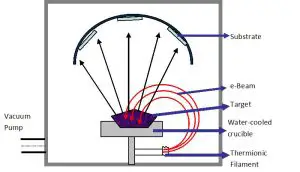Plastic Injection Molding
Plastic injection molding is widely used as a manufacturing process. The process of plastic injection molding requires an injection molding machine, a mold and raw plastic material. Theraw plastic material is melted in the injection molding machine and then it is injected into the mold. It is then cooled in the mold where is will solidify into the final part. Plastic injection molding is very popular and has its advantages, but there are also several disadvantages that have to be considered.

Advantages of Plastic Injection Molding
Here are some of the advantages of plastic injection molding.
- Plastic injection molding can be used for almost anything. It is one of the most widely known and used manufacturing processes around the world.
- Production of plastic injection molding is fast and a large amount of parts can be produced per hour. The number will depend on the number of part molds that the machine can handle; generally it would be about 15-30 seconds for each cycle time.
- It has great flexibility and once the tool is made the material and color of the part can be changed without a lot of problems or difficulty.
- Labor costs are low because the machine or tool is self-gating and automatic. The labor costs are low because the machine does most of the work.
- The design can be flexible. The plastic injection molded parts will have a large amount of flexibility when you know how to design around certain restrictions.
- There is low waste when most of the plastics can be recycled and ground up. All the waste is also ground up and is reused.
Disadvantages of Plastic Injection Molding
The disadvantages of plastic injection molding are as follows:
- There is a high initial tooling cost. The cost to have a tool made for injection molding is high and if you are planning to make it yourself, an injection molding machine will be needed. You also need to know how to operate the machine.
- There are restrictions to part designs. You could possibly need to make some changes to the parts so that they can be made for you, or you will need to use a different manufacturing technique. It is imperative to remember that the mold tool is made from two halves that have to pull apart and the part needs to be able to be released from the tool.
- It is difficult to figure accurate costs of plastic injection molding. There are always uncertainties that need to be figured into the budget. Material costs can fluctuate and can labor costs.
Plastic injection molding is versatile and the go-to manufacturing process with several advantages. The evaluation of the advantages and disadvantages should be carefully weighted before you choose plastic injection molding as the preferred manufacturing method.



